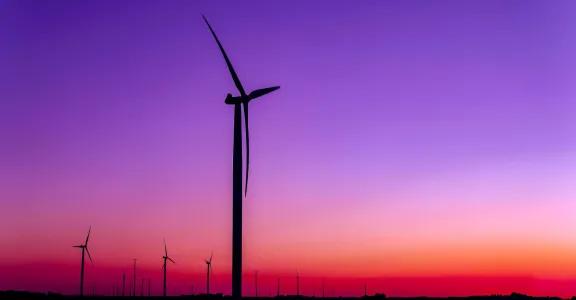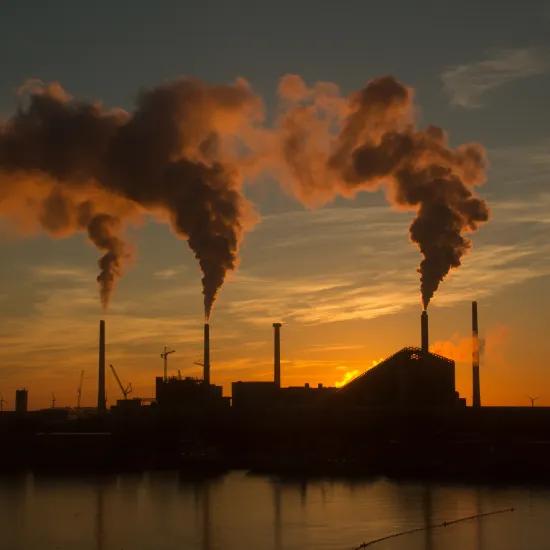Belgium's offshore wind industry has experienced impressive growth over the past 20 years and is now among the world's best
Anyone who occasionally walks by the North Sea has long since ceased to be surprised by the many wind projects on the horizon. With a planned expansion of 3.5 gigawatts of wind power capacity in the Princess Elisabeth Zone by 2030, Belgium is projected to cover one-fourth of its electricity needs. Yet, the possibilities within Belgian territorial waters are limited, leading experts to plead for further research into energy extraction in international waters.
Innovative initiatives are needed for the future
A collective of Belgian academics and marine specialists, united under the name Renewable Energy in the High Seas (REHS), is investigating the potential of renewable energy in international waters. Extracting energy far offshore offers quite some benefits: ample space, consistent and stronger winds, and reduced conflicts with fishing and shipping activities. These advantages create potential for large-scale projects that could produce as much as 100 gigawatts.
Floating wind turbines
The innovation encompasses not just permanently anchored wind turbines but also those mounted on unanchored floating platforms. These platforms are stabilised by a drive system. This technology, inspired by Belgian company DEME and its installation vessel Orion, has the potential to revolutionise how we harness offshore wind energy. However, it will take another 20 to 30 years before this technology is truly market-ready.
Exposure to the elements
Anchored offshore wind turbines, in turn, face several structural challenges that affect their efficiency and lifetime. They are exposed to dynamic loads from wind, waves and currents, which can lead to fatigue and cracking. In addition, seawater corrosion and biofouling accelerate the wear of materials, while sand and sediment erosion can undermine foundations and cables. Offshore installation and maintenance are intricate and expensive, primarily because of harsh marine conditions and the challenges of transporting equipment and staff to the turbines. Moreover, environmental factors like storms and seismic events add extra risks in certain international markets. While these challenges are significant, they can be addressed with continued innovation in materials, technologies and maintenance strategies. All essential for the sustainability and efficiency of offshore wind energy. By the way, we will explore possible solutions in more detail at the Wind Energy Technology Summit.
Synergy with hydrogen production
A significant developing technology is the combination of offshore wind power with hydrogen production. Rather than transmitting electricity via long cables, the idea of converting electricity generated at sea into hydrogen or its derivatives, like ammonia, is being explored. These molecules could then be transported by ship, potentially reducing transportation costs significantly and addressing energy storage challenges. Companies such as Exmar, with their expertise in floating natural gas conversion plants, could be pivotal in this area. Consequently, stakeholders in Belgium and across Europe are closely monitoring Greenland, which offers the optimal conditions to begin utilising this technology.
Hydrogen market in Belgium
But Belgium, due to its strategic location, strong industrial base and supportive government policies also has significant market potential for hydrogen. The hydrogen economy can promote the decarbonisation of industry, especially in chemical sectors and refineries. It also provides sustainable solutions for heavy transport and energy storage, contributing to grid stability. Thanks to the ports of Zeebrugge, Ghent and Antwerp, Belgium can become an exporter of hydrogen and related technologies. Innovations from leading research institutions and tech companies bolster this potential, positioning Belgium to take a central role in the emerging hydrogen economy. We will explore all the market opportunities in depth at the Wind Energy Technology Summit.
Global expertise
Thanks to two decades of experience and technological advancements, the Flemish offshore wind industry has become a global frontrunner. Flemish companies such as DEME, Jan De Nul and Smulders have paved the way for a whole chain of niche companies operating in the offshore sector. These companies offer a wide range of services, from seabed mapping by GeoXYZ to digital infrastructure by e-BO Enterprises and cable monitoring by Marlinks. This ecosystem of top players reinforcing each other ensures that the sector is rapidly professionalising.
Pieter Jan Jordaens: "It is important that we stay one step ahead of the competition with constant innovation. The Princess Elisabeth Zone will serve as a test zone for new technologies, supported by initiatives such as POM West Flanders' Blue Accelerator maritime test platform. This innovative approach is crucial to defending and building on Belgium's technological leadership."
Economic and ecological benefits
Belgium's offshore wind sector offers significant economic benefits. Large projects can contribute not only to energy supply and CO2 reduction, but also to job creation, added value and tax revenues. The sector offers opportunities for companies in the dredging industry, shipping companies and electrolyser producers. Moreover, decommissioning old wind farms could become a new area of expertise, with opportunities for recycling and reusing foundations for new energy projects.
At its core, Belgium's offshore wind and hydrogen sector is an example of how innovation and collaboration can lead to sustainable and economic growth. With a strong foundation of 20 years of experience and an eye on the future, Belgium remains a pioneer in the global energy transition.
Read more?
- De Tijd - ‘België kan pionier worden in energiewinning op volle zee’
- Trends – ‘Windparken zijn de nieuwe landsgrenzen’: in het spoor van de Vlaamse offshore-industrie in de VS
- Trends – Windindustrie op zee vindt tweede adem: Trends in het spoor van offshore in de VS
- Trends – België wordt voor hernieuwbare energie het knooppunt van Europa: in het spoor van de Vlaamse offshore in New Orleans
- Trends – Carl Heiremans (Jan De Nul): Onze hoogconjunctuur stopt niet na 2030
- Trends – Liesbeth De Baere (Marlinks): ‘We merken het meteen als er met een onderzeese kabel geknoeid wordt’




